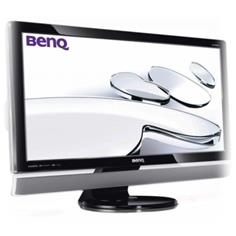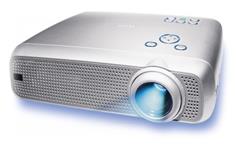Do you remember the first day of this Beginner’s Guide to Computer Hardware course, when I asked “What is a computer?” Most of us have pointed our fingers towards monitor.

So the question “What is a monitor?” can simply be answered such.
Why Monitor is needed?
We can talk to the computer as much as we can, through commands, but at last we can’t assume everything, so we need some reaction from the computer. The reaction can be a visual or audible one. People prefer visual communication to vocal, so inventors designed monitor.
Monitor just shows us the computer’s reaction for every action we do!
Now let’s enter into our topic… What are all the types of monitor available in India?
Types of Monitor
1. CRT
2. LCD
3. Projectors

CRT
I guess you may not need me to say its expansion. Nowadays CRT is almost obsolete. But we need to discuss about it, as it’s the predecessor of LCD.
Like I have explained for previous components, I’m not going to explain the working of these displays, rather, I’m going to discuss some other interesting things about them.
First let me start with the drawbacks in CRT
1. In convex shaped older model CRTs we cannot see the images clearly, in corners
2. Later flat CRTs came, but still they couldn’t give higher resolution displays
3. Wide screen aspect ratios were not available in CRTs, so they are not suited for viewing movies
4. Though colour reproduction was good, vibrancy, deep blacks, higher contrast ratio were not good in CRT
5. Display size didn’t exceed 19 inches, though a few 21 inches could be found
6. CRT monitors consumed larger space and higher power consumption
That is the reason for the birth of LCD monitors.
LCD

LCD TV vs LCD monitor
LCD TVs are usually larger in size but lower in resolution.
Full HD resolution is available in LCD TVs too but it is available in 32 inch and 42 inch TVs only, whereas full HD resolution is available in 21 inch LCD monitor itself (whereas it’s available from 17 inches in laptop monitors and from 5 inches in smartphones)
So, now comes the question, What’s the big deal in resolution? Why do I need high resolution in monitors compared to TVs?
The answer is really simple.
1. Viewing distance is much lesser in LCD monitors than LCD TVs
2. LCD monitors are not only used to watch videos and photos like TVs, but also for viewing crispy text and shapes. Also, we wish the text displayed on LCD monitor to be clearer even if we zoom out the document, this highly depends on the resolution.
3. Also, Higher the resolution, larger the working area
LCD displays had overcome most of the limitations of CRT displays.
Some of its benefits are as follows
1. Brilliant ‘Auto set’ or ‘Auto correct’ display option
2. Better contrast ratio and deeper blacks
3. Much slimmer and lower power consumption
4. Longer life compared to CRTs
Coming to the types of LCD there are 2. They are CCFL and LED backlit. CCFL backlit LCD is commonly called as LCD monitors and LED backlit is commonly called LED monitors.
CCFL backlit LCD monitors have lower dynamic contrast ratio compared to LED monitors. Also the life of LED is high compared to CCFL. Since a particular area can be backlit well using LEDs, they can deliver deeper blacks, while consuming lesser power.
Today, the best one that we can buy is LED backlit LCD monitors.
Projectors

But still people consider it as a choice. We shall see, “Which segment of PC users see it as a viable choice?” tomorrow. In the meantime let’s share some merits and demerits of projectors.
Merits:
- Very compact and portable
- Comes with a remote
- Screen size is not limited (though you cannot magnify indefinitely)
- Best for doing presentations
Demerits:
- Room is needed to be prevented from external light
- Generally, NO inbuilt speakers
- Colour vibrancy, contrast, response, clarity are poor
- Resolution is too low
- Though it’s portable, initial adjustment is needed
- Costly
This covers the basic types of monitors.
Tomorrow I’m going to discuss about “What are the things we should see before buying a monitor?“

I wish to know something about OLED computer monitors and touch screen computer monitors….. can u please share some information regarding that…
OLED concept is entirely different from LED monitors. Most of the mobile displays are powered by OLED displays. But still they’re a bit more expensive. If you want to know how OLED works? here’s Howstuffworks
Adding to your question about Touchscreen, OLEDs don’t recognize your toch, it’s the glass screen panel placed or pasted above the OLED or LCD screens.
hi arun,
i need to know whats the different between laptop screen and desktop monitor resolution. I feel much better when i have seen images and movies in my desktop monitor than in laptop
There are several factors playing the key roles.
First of all, the viewing angle, then comes the colour vibrancy, contrast ratio, brightness levels and above all pixels per inch